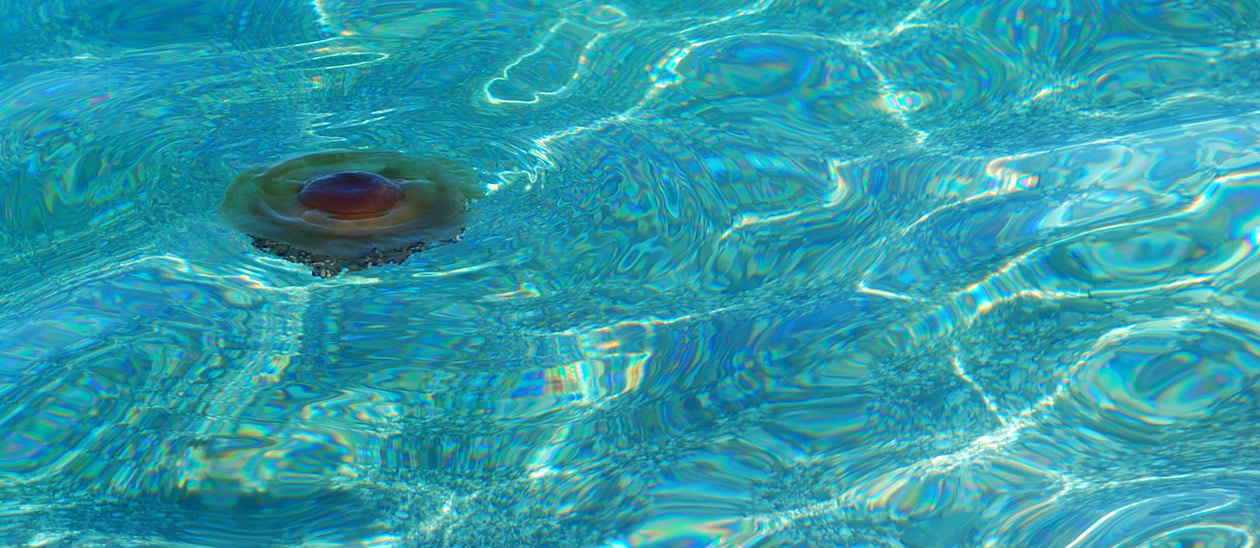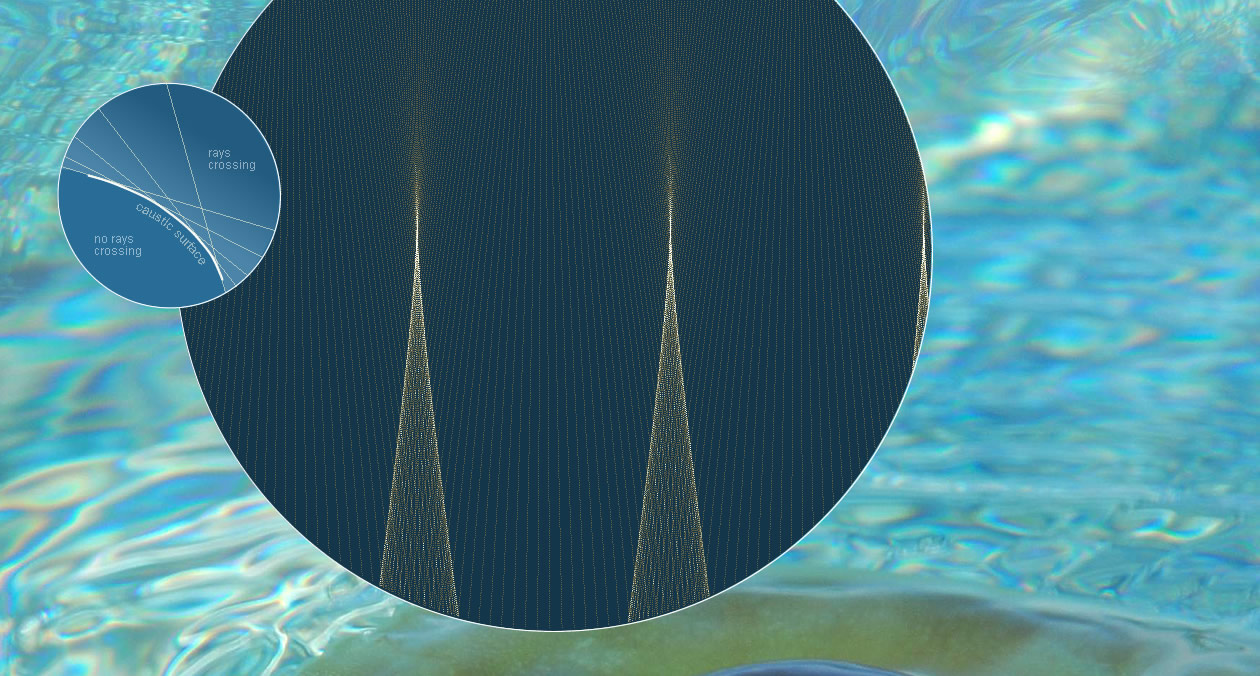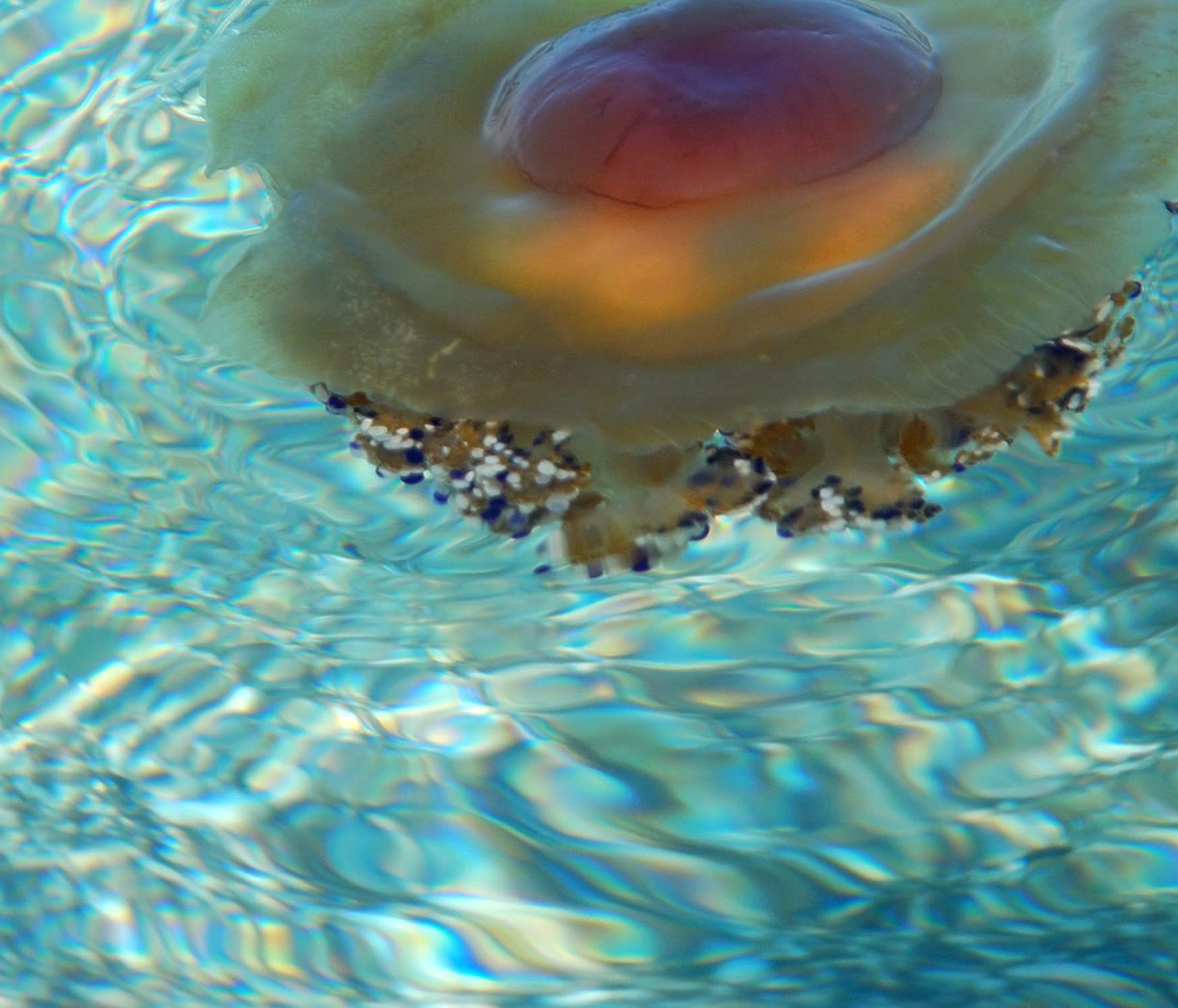 |
 |
 |
 |
La Cassiopea & Caustics ~
Antonino Gumina imaged "La Cassiopea" (Cotylorhiza tuberculata) near Capo D'Orlando, Messina, Sicily. The surrounding bright lines and patterns are caustics playing on the shallow sea bed and visible through the crystal clear Mediterranean water. ©Antonino Gumina, shown with permission. |
 |
 |
 |
 |

| About - Submit | Optics Picture of the Day | Galleries | Previous | Next | Today |
Caustics are Nature’s ‘focussing’, quite different from that laboriously achieved by our multi-element lenses. Caustics play and dance. They are ever moving and yet are always sharp with strangely permanent and stable forms that we recognise and yet find hard to define. In contrast our lenses are fragile, they lose their focus with the slightest shift of an element or the CCD plane, their focus is unstable in the sense that caustics are robust and strongly stable. |